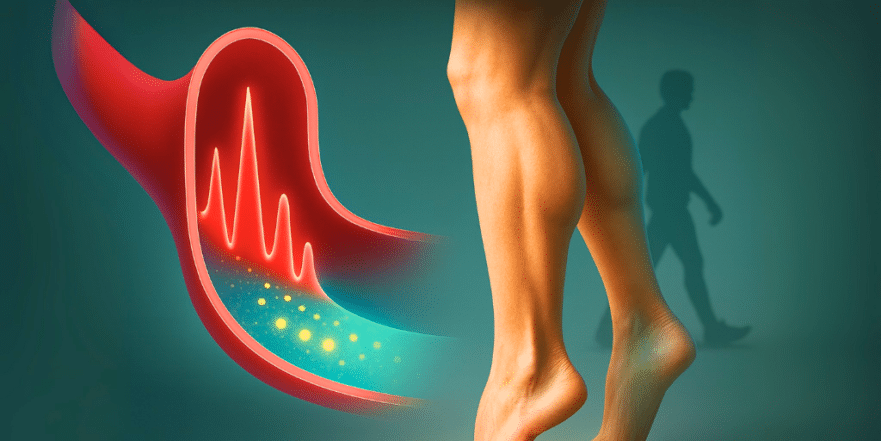
You don’t need a gym membership or a marathon to manage your blood sugar after a meal. There are four surprisingly simple exercises that can help your body use glucose for energy, leading to smaller blood sugar spikes. These movements are easy to incorporate into your daily routine and can make a real difference in how you feel.
Key Takeaways
- Movement is Key: Engaging your muscles after eating helps them use glucose from your bloodstream for energy.
- Mitochondria Power: Tiny structures called mitochondria within your muscle cells convert glucose into energy (ATP).
- Reduce Spikes: By using glucose, your muscles prevent it from causing a large spike in your blood sugar.
- Simple Exercises: Calf raises, walking, squats, and household chores are effective ways to get this done.
- Timing Matters: Aim to move within 90 minutes after finishing your meal, as this is typically when blood sugar peaks.
- Less Insulin Needed: Using muscles to process glucose reduces the need for insulin, which can have long-term health benefits.
How Movement Helps Your Muscles
Whenever you move a muscle, whether it’s a big action like running or a small one like wiggling your toes, your muscles contract. To make these contractions happen, your cells have tiny powerhouses called mitochondria. These mitochondria take things like glucose from your blood and turn them into energy, which your muscles use to keep moving. The harder or longer your muscles work, the more energy they need. This is where your bloodstream comes in handy – your mitochondria can pull glucose from it to fuel your muscles. We can totally use this to our advantage, especially after eating.
Why Lowering Glucose Spikes Matters
When we eat foods high in carbohydrates (like bread, pasta, rice, potatoes, oats) and sugars (cookies, fruit), our blood glucose levels can rise quickly. These spikes aren’t great for us. They can lead to inflammation, cause your body to release insulin, and then, as your blood sugar drops, you might feel tired and crave more sugar. Reducing these spikes is really important for feeling good day-to-day and for preventing long-term health issues. The good news is, by getting your muscles working soon after a meal, they can grab some of that glucose from your bloodstream for energy instead of letting it cause a big spike.
Four Simple Exercises to Try
Here are four easy ways to get your muscles working after you eat:
1. Calf Raises (The Discreet Option)
This is a super simple and discreet exercise you can do almost anywhere, like at your desk. Just stand with your feet flat on the floor and repeatedly lift your heels up and down. Your calf muscles, specifically the soleus muscle, are surprisingly good at taking up glucose from your blood after a meal. Studies have shown that even extended periods of calf raises can significantly reduce post-meal glucose spikes and insulin levels. While you don’t need to do them for hours, even 10 minutes can make a difference. Try doing these within 90 minutes of finishing your meal.
2. Walking (The Classic Choice)
Walking is a well-known and effective way to help manage blood sugar. When you walk, the muscles in your legs, arms, and torso are contracting, and they need energy. They’ll pull that energy, in the form of glucose, from your bloodstream. Research confirms that walking after eating lowers your body’s glucose levels. How much walking? Just 10 minutes can have a noticeable effect. You can walk around the block, up and down stairs, or on a treadmill. Doing this within an hour and a half after eating can help curb fatigue and cravings later in the day.
3. Squats (The Powerful Mover)
While walking is great, some studies suggest that more intense muscle activity might be even more effective. One study compared 30 minutes of walking to doing short bursts of squats spread out over several hours. The results indicated that the squat group had better glucose control. You don’t need to do squats for hours on end. Try doing a set of 10 squats every 45 minutes for a few hours after a meal. This can be a very effective way to keep your glucose levels more stable.
4. Household Chores (Movement in Disguise)
Don’t underestimate the power of everyday tasks! Doing a simple house chore after a meal can also help. Things like tidying up your kitchen, folding laundry, or vacuuming for about 15 minutes can engage your muscles and help process glucose. Organizing these small movements after a carb-heavy meal can significantly reduce the glucose spike and its negative effects. It’s a practical way to get some movement in without it feeling like a formal workout.
The Benefit of Moving Without Extra Insulin
Normally, when your blood sugar spikes after eating, your pancreas releases insulin to help store the extra glucose. While this is a necessary process, consistently high insulin levels over time can lead to issues like insulin resistance and type 2 diabetes. The great thing about moving your muscles after eating is that they can take up glucose without needing insulin. This means you can lower your blood sugar spike and feel better (more energy, fewer cravings) without putting extra demand on your insulin system. It’s a win-win for your health.
Source: Jessie Inchauspé

